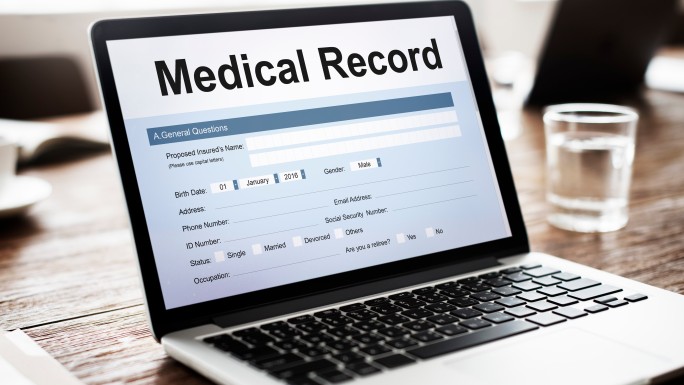Some useful notes for better using FHIR
As healthcare systems strive to integrate the FHIR standard, the importance of FHIR understanding comes to the forefront. Today, we will find out about FHIR certifications, exploring some helpful datasets, key resource examples, and open-source code that adheres to this standard.

FHIR Certification
FHIR (Fast Healthcare Interoperability Resources) certification is a process that validates that a healthcare IT system or product complies with the technical and functional standards specified by FHIR. The certification process ensures that the system or product effectively implements FHIR standards for data exchange, interoperability, and security.
Popular FHIR certifications
To ensure professionalism and reliability in the implementation and use of FHIR, FHIR certifications are required. These certifications give professionals in the field of electronic health management and healthcare software development an opportunity to demonstrate their capabilities and expertise in understanding the principles and regulations of FHIR.
Here are some important and popular FHIR certifications:
FHIR STU3 Certification
This certification is designed for the FHIR Standard for Trial Use 3 (STU3) version. It assesses the knowledge and ability to implement FHIR based on the STU3 standard. This certification evaluates the understanding of the FHIR structure and rules, the ability to interact with other applications and systems, and the capability to use FHIR for accessing and sharing healthcare data.
FHIR R4 Certification
This certification is similar to the FHIR STU3 Certification but based on the FHIR Release 4 (R4) version. It focuses on the implementation of FHIR according to the R4 standard and the advanced aspects of FHIR such as data searching, performing healthcare transactions, and managing entities within FHIR.
FHIR Profiling Certification
This certification focuses on the ability to build and implement FHIR profiles. FHIR profiles are important for customizing FHIR to fit specific organizational or industry requirements. This certification evaluates the ability to analyze requirements and create appropriate FHIR profiles.
FHIR Server Certification
This certification focuses on the ability to implement and manage a FHIR server. It assesses the configuration, implementation, and maintenance of a FHIR server, ensuring security, performance, and scalability.
Essential standard datasets when using FHIR
FHIR provides a flexible and user-friendly approach for exchanging healthcare data between different systems. However, to actually use FHIR, having standardized datasets is the key part of getting accurate and consistent data. Below are some required datasets to seamlessly implement FHIR in healthcare settings.

- Patient dataset: This dataset contains personal information about the patient, such as name, age, gender, address, and contact information. This is one of the most crucial datasets for identifying the patient's identity within the system.
- Medical record dataset: This dataset contains detailed information about the patient's medical history, including information about diagnoses, symptoms, test results, prescriptions, and treatment processes.
- Appointment dataset: This dataset contains information about the patient's appointments with healthcare service providers. It includes the date, time, and relevant information regarding the appointment's performer.
- Billing dataset: This dataset contains information about payment transactions, invoices, and financial details related to healthcare services.
- Medication dataset: This dataset contains information about medications, including types, dosages, units of use, and instructions for use. It ensures that medication information is shared accurately and consistently within the system.
- Imaging dataset: This dataset contains medical images such as X-rays, ultrasounds, MRIs, CT scans, and related reports. This enables healthcare service providers to effectively exchange medical imaging.
Some key resources in FHIR and examples
FHIR defines resources, which represent different aspects of healthcare data, to make access, creation, updating, and searching of information easier. Here are 15 key resources in FHIR and examples of how they are used:
Patient
Information about a specific patient, including name, date of birth, gender, and contact information.
Example: A patient named John Smith, born on January 1, 1980, male.
Practitioner
Information about a healthcare practitioner, including name, title, specialty, and contact information.
Example: A doctor named Dr. Emily Johnson, with the title of Internal Medicine, specializing in Diabetes, and contact information.
Observation
Information about healthcare observations or measurements, such as blood pressure, glucose level, or X-ray images.
Example: A patient's blood pressure measurement, including systolic and diastolic values.
Condition
Information about a patient's healthcare condition, such as diseases, diagnoses, and disease progression.
Example: A patient's condition of diabetes, was diagnosed by a doctor on January 1, 2022.
Medication
Information about medications, including medication name, dosage, route, and other attributes.
Example: A medication insulin, with a dosage of 10 units.
Allergy intolerance
Information about a patient's allergies or intolerances to specific substances.
Example: A patient's allergy to penicillin.
Procedure
Information about healthcare procedures, such as surgeries, treatments, or tests.
Example: A cardiac surgery performed on a patient.
Encounter
Information about a healthcare encounter between a patient and a healthcare provider.
Example: A hospital appointment between a patient and a doctor, recording the date, time, and reason for the appointment.
Diagnostic report
Information about diagnostic report results, such as imaging tests, blood tests, or ultrasounds.
Example: A patient's blood test results, including indices such as hemoglobin and glucose.
Document reference
Information about referenced healthcare documents, such as medical reports, patient records, or treatment guidelines.
Example: A document referencing an MRI report of a patient.
Immunization
Information about a patient's immunizations, including vaccine names, administration dates, and dosages.
Example: Administration of the COVID-19 vaccine to a patient on January 1, 2023.
Care plan
Information about a patient's healthcare plan, including goals, activities, and schedules.
Example: A post-surgery care plan for a patient, including daily blood pressure checks and medications used.
Organization
Information about healthcare-related organizations, including name, address, and contact information.
Example: A hospital, including the name, address, and phone number.
Location
Information about physical locations, such as hospitals, clinics, or examination rooms.
Example: A physician's clinic, including name, address, and room number.
Practitioner role
Information about the role and responsibilities of a healthcare practitioner within a specific healthcare organization.
Example: The role of a doctor within a hospital, including specialty and working hours.
Popular open-source code examples for FHIR implementation
HAPI-FHIR: HAPI-FHIR is a powerful open-source Java library that is used for implementing and building FHIR applications. HAPI-FHIR supports both FHIR server and client, allowing you to handle RESTful API requests, and build, store, and search FHIR resources. It supports standard FHIR versions from DSTU2 to R4.

FHIR.js: FHIR.js is an open-source JavaScript library that provides tools and programming interfaces for working with FHIR. With FHIR.js, you can interact with the FHIR API and perform operations such as searching, retrieving information, adding, modifying, and deleting FHIR resources within JavaScript code. It facilitates easy handling and transformation of FHIR objects in JavaScript.
Aidbox: Aidbox is an open-source FHIR server built on the Elixir platform and available as a cloud service. Aidbox provides a fast and powerful FHIR database, enabling you to store, query, and interact with FHIR resources based on international standards.
Smile CDR: Smile CDR is a FHIR server and advanced service built on the Java platform. It offers features such as storage, search, querying, security, and integration for healthcare systems. Smile CDR supports the latest FHIR standard versions and provides a user-friendly management interface for configuration and monitoring.
FHIRbase: FHIRbase is an open-source database built on PostgreSQL, optimized for storing and querying FHIR resources. FHIRbase supports multiple FHIR standard versions and provides tools for efficient querying and searching of FHIR data.
These are just a few examples of popular open-source code for FHIR. There are many other tools and libraries developed to support the implementation and interaction with the FHIR standard in the healthcare domain.
Conclusion
The healthcare industry is towards a more connected and patient-centric paradigm, and FHIR standards are becoming a requirement and a key for innovation. By understanding FHIR certifications and other technology aspects of this standard, healthcare providers can expect to improve data exchange and, more importantly, enhance patient care and outcomes. We hope these notes about FHIR can give a basic roadmap for developers or organizations to ensure healthcare systems align with global interoperability standards.





